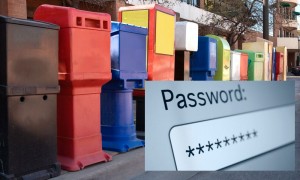If 2013 was the year of the Great Paywall experiment in Internet news, perhaps 2014 will come in like a wrecking ball, blasting holes in the theory that everyone should pay for accessing news online.
At least that’s one scenario suggested by recent developments in the experimental paywalls that news organizations have been imposing and tweaking on their websites at an accelerated pace since The New York Times instituted its metered paywall in 2011.
This fall, The Dallas Morning News dismantled the general paywall it first put up in 2011, declaring it had failed to entice enough people to pay in order for it to make good business sense.
While letting everyone read its content for free again, the Dallas paper announced it would still try to entice some readers to pay by offering a new digital subscription to access a version of its website containing fewer ads and a more aesthetically pleasing design. In addition, the new premium offering provides offline benefits.
“For us it’s a grand experiment,” said Jason Dyer, the chief marketing officer for The Dallas Morning News.
Other news outlets are readying new premium offerings, too, even if they aren’t dismantling their existing paywalls. The New York Times, for example, announced it is planning to offer new digital subscriptions for separate niche sections like food and dining next year.
Giving readers more avenues to pay for content instead of a single paywall makes it easier to draw digital readers, said Steve Outing, an independent digital media consultant based in Colorado.
“Any kind of barrier that comes up to things that you want to see really puts a lot of people off,” he said. “Especially if it’s any kind of a hard barrier.”
But Dyer and Outing said there’s no one-size-fits-all approach to creating premium content because each news outlet has a different audience.
Ken Doctor, a media analyst and author of the book “Newsonomics,” said he thinks more news outlets will develop standalone paid digital products.
Niche digital products are hardly new. News outlets have been experimenting with how to charge for content since the early days of the web. People magazine rolled out several digital subscription offerings this fall, including the subscriber-only People Premium, offering special apps and digital exclusives, and People V.I.P., which gives readers full access to print and online content and three gifts from the magazine.
The San Francisco Chronicle this year launched SFChronicle.com, a premium site giving subscribers full access to columnists, a more aesthetically pleasing design and other features.
American Journalism Review looked at four different strategies individual outlets use or have used for their premium content sections, in order to show the variety of directions digital subscription models can take in the near future.
The Dallas Morning News
The Dallas paper’s new premium offering tries to give paying customers a better experience by blending design improvements with special, experiential benefits. It offers limited ads and an aesthetically smoother layout to bring relevant content to readers in the most “frictionless” way possible, Dyer said.
It also tries to create a loyalty context through such experiences as getting their pictures taken in Halloween costumes by a newspaper photographer.
“I think what we’re trying to achieve is the proper balance between how the consumer consumes the information as well as wrapping the information in an overall experience,” he said.
The section is still young and tweaks are being made to ensure the best news gathering experience possible for the paper’s audience.
Dyer said across the media industry there is more experimentation, such as HTML upgrades and the growth of responsive design, aimed as customizing the news experience for users.
“It’s in that spirit that we’re doing what we’re doing,” he said.
The Chicago Tribune
The Chicago Tribune employed a premium strategy in order to generate new consumer revenue and became less dependent on ad revenue, said Joyce Winnecke, vice president and associate editor of The Chicago Tribune.
The paper launched Printers Row, a literature section, in early 2012. The section has coverage of books and the literary scene as well as author events and original fiction.
“We’re able to deliver much more to this audience than we can in a mainstream publication,” Winnecke said.
Readers of Printers Row have payment options that include digital and print subscriptions as well as subscriptions with access to author events.
Winnecke said she would not give the number of Printers Row subscribers but said it has been profitable and there has been a high number of renewals.
In addition to Printers Row, The Chicago Tribune has e-Books available for readers to purchase and Blue Sky Innovation, which is a premium section of content about innovation and entrepreneurship.
Winnecke said the paper is also working on a parenting section.
“I think it’s important to find segments of audiences that can be superserved and to do it well,” she said.
ESPN
ESPN Insider emerged shortly after ESPN.com during the late 1990s and now has about 800,000 subscribers, said Nate Ravitz, senior director for premium and fantasy content at ESPN.
Ravitz said because the section has been around so long, they do not have to go through the hurdles of introducing audience members to a new type of paywall.
The Insider section, which is only a small percentage of ESPN.com’s content, gives readers advanced analytical content that helps them predict what is going to happen in sports next.
“Insider is for the most avid sports fans,” said Patrick Stiegman, editor-in-chief for ESPN.com.
Stiegman said when he began working for ESPN in 2005 the Insider product had not generated much enthusiasm and awareness with fans and part of it was locking access to popular ESPN personalities.
Now the website emphasizes utility content that helps subscribers get an edge in their fantasy sports leagues, when making wagers on games, and during sports conversations at the water cooler, Stiegman said.
Ravitz said with such high membership numbers, Insider provides a steady and predictable revenue stream that isn’t subject to the same vagaries as advertising revenue, such as a sponsor’s budget.
The Star Tribune
But separate premium sections are not for every outlet.
The Star Tribune, which is based in the Twin Cities metro area, shelved its Access Vikings section of premium Minnesota Vikings coverage three years ago.
Access Vikings was enveloped in an overall digital subscription package, said Cory Powell, managing editor for new products at The Star Tribune.
The newspaper now enables users 10 free articles a month before requiring them to pay.
Powell said the individual Vikings premium section was challenging because there was full coverage during the NFL season but not as much during the off-season.
“It applies a certain pressure to your traffic,” he said.
Putting certain content that is good for advertising revenue, such as videos, behind a hard premium paywall made reaching consumers difficult, he said.
“When you tuck it behind a paywall you essentially throttle the amount of revenue you’re able to capture on that,” he said.
But Powell said a holistic digital subscription is able to satisfy readers hoping to get strong and consistent Vikings content, including those outside of Minnesota.
“We still commit more staff resources than we ever have,” he said about The Star Tribune’s Vikings coverage.
Looking to the future
Some analysts question the future of both hard paywalls that make readers pay to access everything and metered versions allowing free access to a limited number of articles.
Doctor said the paywall model is an old-world product based on the print business model, one that does not work well with younger readers who are unaccustomed to buying annual subscriptions for newspapers and magazines.
“That’s the legacy product,” he said. “We in the industry know subscriptions.”
Doctor said newspapers need to gauge the ages, interests, and geographies of their readers in order to determine what kind of news products to make for them, especially for premium content.
He said when creating niche products, they should find ways to satisfy an identified audience and then determine the price points and talent needed to create the required content.
“The biggest problem is that they’re not product development companies.”
Doctor said the kind of niche offerings planned for The New York Times is a part of a trend he calls Paywalls 2.0. He said the Paywall 1.0 era began when The New York Times launched its paywall in early 2011.
He said he anticipates that when The New York Times introduces these offerings, more news outlets will follow suit and begin creating their own niche payment options.
“My guess is that we will see a number of those be successful,” he said.








